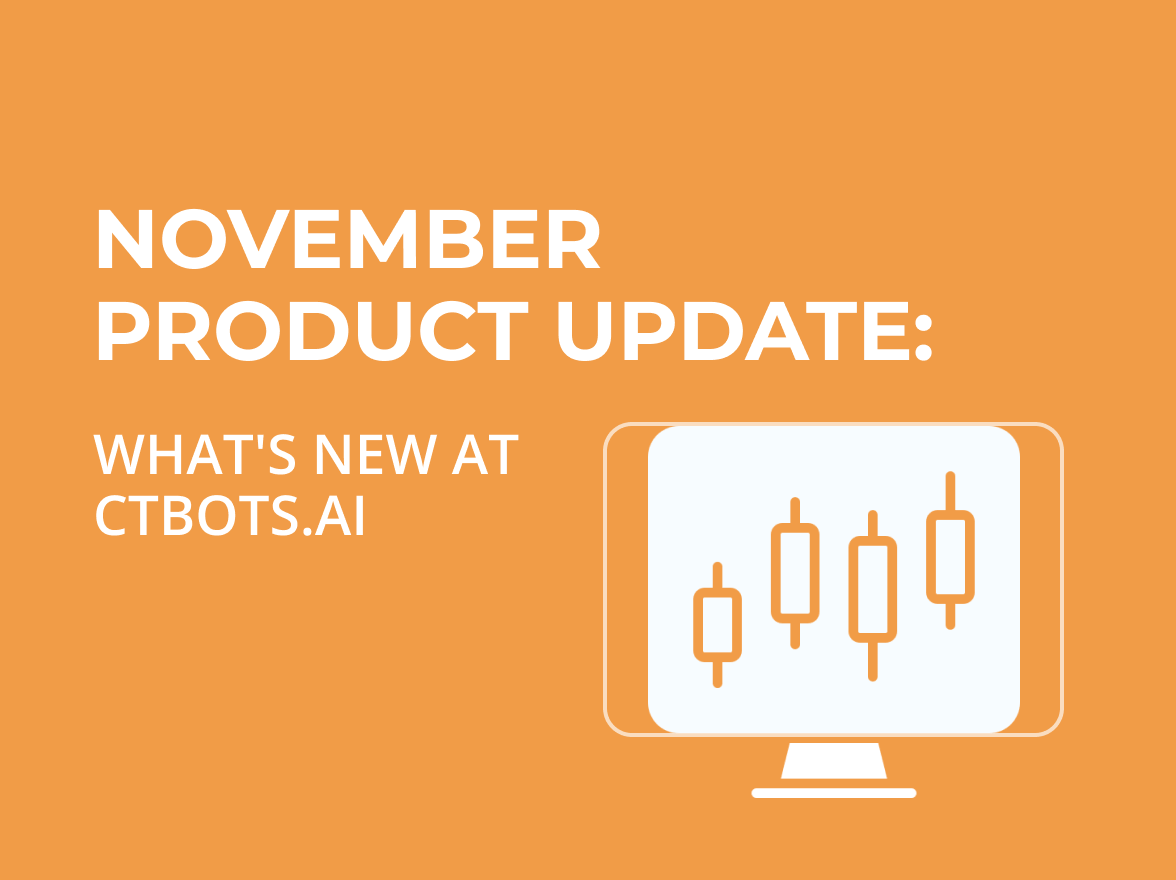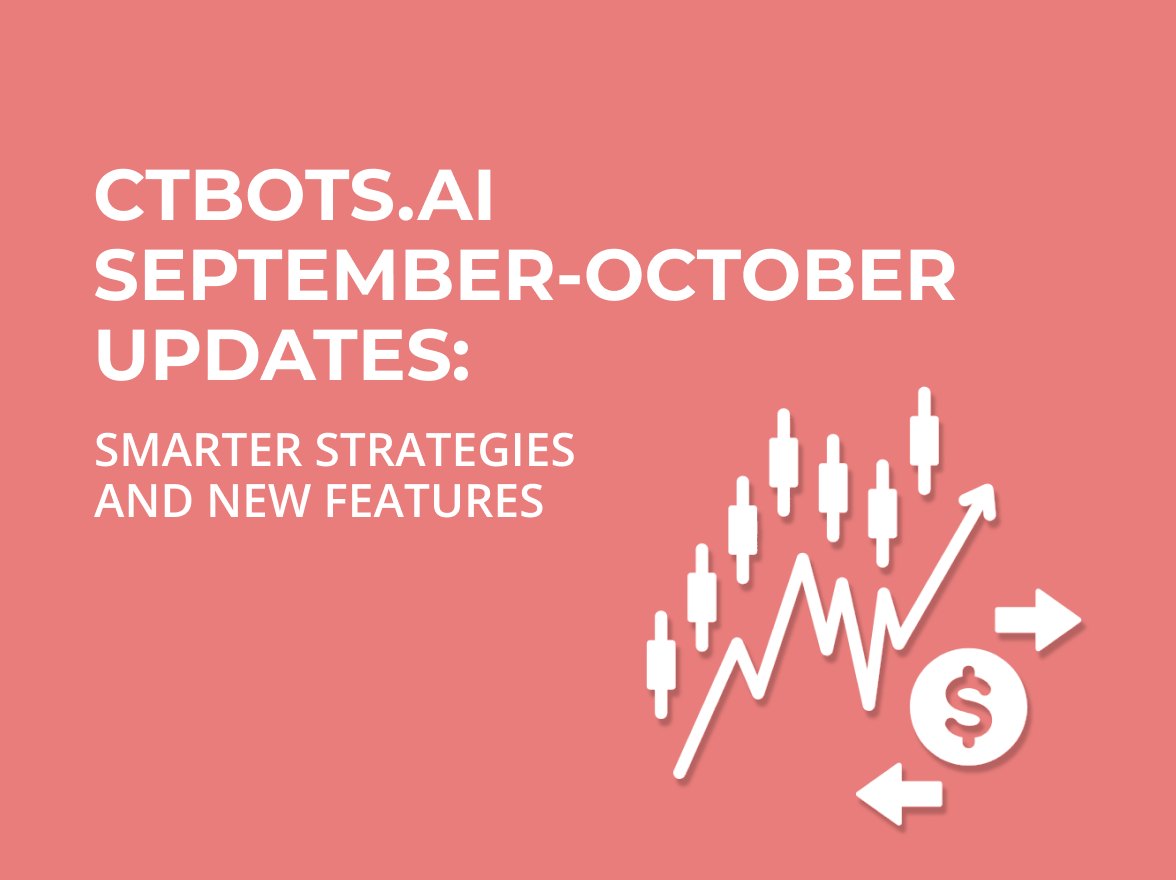November product update: What’s new at ctbots.ai
November was an incredibly productive month for ctbots.ai. We made significant improvements to our strategy logic, portal functionality, and overall bot performance.
In the fast-paced world of digital finance, AI bot crypto trading is no longer science fiction—it’s a disruptive force reshaping how investments are made. Companies like SSA Group are at the forefront, offering cutting-edge tools and frameworks for developing AI-driven crypto trading bots. But with the rise of sophisticated simulators and virtual trading environments, a critical question arises: Can a crypto simulator actually predict real-world profits?
This blog takes you inside the algorithms that power simulators and explores their real-world reliability. From the mechanics of data-driven predictions to behavioral economics, we break down how simulators work, what they miss, and what that means for both novice and seasoned traders.
A crypto trading simulator is a virtual environment where traders can test strategies without risking real money. These platforms replicate the market’s behavior using historical data or live feeds to simulate real-time trades. They’re commonly used by:
Advanced simulators integrate AI bot crypto trading features, allowing bots to learn from simulations before going live. These bots use machine learning algorithms to analyze vast datasets, recognize patterns, and make split-second decisions that could make or break a portfolio.
The appeal of simulators is obvious—they provide a risk-free environment to explore complex trading techniques. But how accurately do they replicate real-market behavior? That’s where things get complicated.
AI bot crypto trading tools used in simulators offer impressive insights, but the market is affected by countless unpredictable variables.
AI-powered simulators don’t just copy past price movements. They leverage historical and real-time data, sentiment analysis, and technical indicators to project outcomes. These AI models adapt over time using techniques such as:
The integration of these methods into AI bot crypto trading systems allows for dynamic simulations that evolve with market behaviors.
Yet, while simulators might be excellent in modeling certain factors, they often fall short in capturing the psychological dimension of real trading—panic, greed, FOMO, or mass sell-offs.
Simulators are fantastic training wheels for traders and developers. They excel in:
However, simulators often fail to replicate:
A perfect strategy in a simulator doesn’t always hold up in the chaos of live markets.
And while AI bot crypto trading solutions built using SSA Group’s frameworks handle data incredibly well, no AI can yet fully predict the irrationality of the market.
The short answer? They can be trusted to a point. AI bot simulators provide an invaluable toolset for:
But they are not foolproof predictors of actual profitability. The underlying models often make assumptions about stable conditions, which rarely hold true in real-world crypto markets.
Even though they aren’t perfect, simulators do play a crucial role in improving bot performance.
For businesses and individual traders using AI bot crypto trading platforms, these improvements lead to smarter, more resilient bots that adapt faster to changing markets.
Platforms built by SSA Group enable a full loop of simulation, feedback, and retraining, helping bots get incrementally better without costly trial-and-error in live markets.
Yes—and no. Simulators help lay the groundwork for profitable strategies, but they don’t guarantee results. Real profits depend on:
Simulators will help you not lose money on bad ideas. But making money? That takes insight, timing, and often a bit of luck.
Nevertheless, for those leveraging AI bot crypto trading technologies, simulators remain an essential step. They help separate viable strategies from dead ends.
As crypto markets mature, simulators are getting more intelligent. The future of trading simulations may include:
This evolution will only enhance how we build and test AI bot crypto trading systems. Eventually, simulators may be able to react to fake news or influencer tweets as humans do—almost instantly.
SSA Group continues to develop next-gen simulation tools that close the gap between virtual and live trading. While simulators won’t ever fully replace real-world testing, they will get much closer to mimicking the intricacies of live markets.
So, can a crypto simulator predict real profits? Not exactly. But it can dramatically reduce the learning curve, help refine strategies, and limit losses before real money is on the line.
For anyone diving into AI bot crypto trading, simulation is a critical phase of the journey. It helps train both humans and algorithms to recognize patterns, test responses, and prepare for market turbulence. To build intelligent, scalable, and simulation-ready bots, trust in proven experts. SSA Group’s crypto bot development services offer the technical backbone needed to turn your AI trading ambitions into a profitable reality.

November was an incredibly productive month for ctbots.ai. We made significant improvements to our strategy logic, portal functionality, and overall bot performance.

Over the past two months, the ctbots.ai team has been working intensively to enhance our trading strategies and platform functionality.
you're currently offline